During a long day on the trail, your backpack should be your best friend. It should be easy to access the things you need, comfortable carrying however large a load you have, and easy to move the distance you need in. But backpacks are an extremely wide category, containing everything you might need for a half-day jaunt through the local park to massive packs for expeditions on the world’s tallest mountains. Knowing how you intend to use the pack is step one in deciding which is right for you, but understanding the differences in size, features, and structure will help guide you to the right option.

Daypacks (Up to 35 liters)
Daypacks are the smaller bags used for day hikes. Since hikes vary greatly in length and intensity, even as day missions, they aren’t one size fits all. You’ll need to have one big enough to hold all of your hiking essentials, as well as food and appropriate clothing for the location and season, meaning day hiking bags during the winter are consistently larger than summer backpacks. Consider the terrain, too: Will you be above treeline and need to carry more layers for wind/storm protection?
Also, it’s worth noting there is a distinct difference between school/commuter bags and hiking packs. The latter typically have better shoulder support and waist belts that effectively transfer the load to your hips, making them more comfortable on longer hikes or carrying heavier loads.
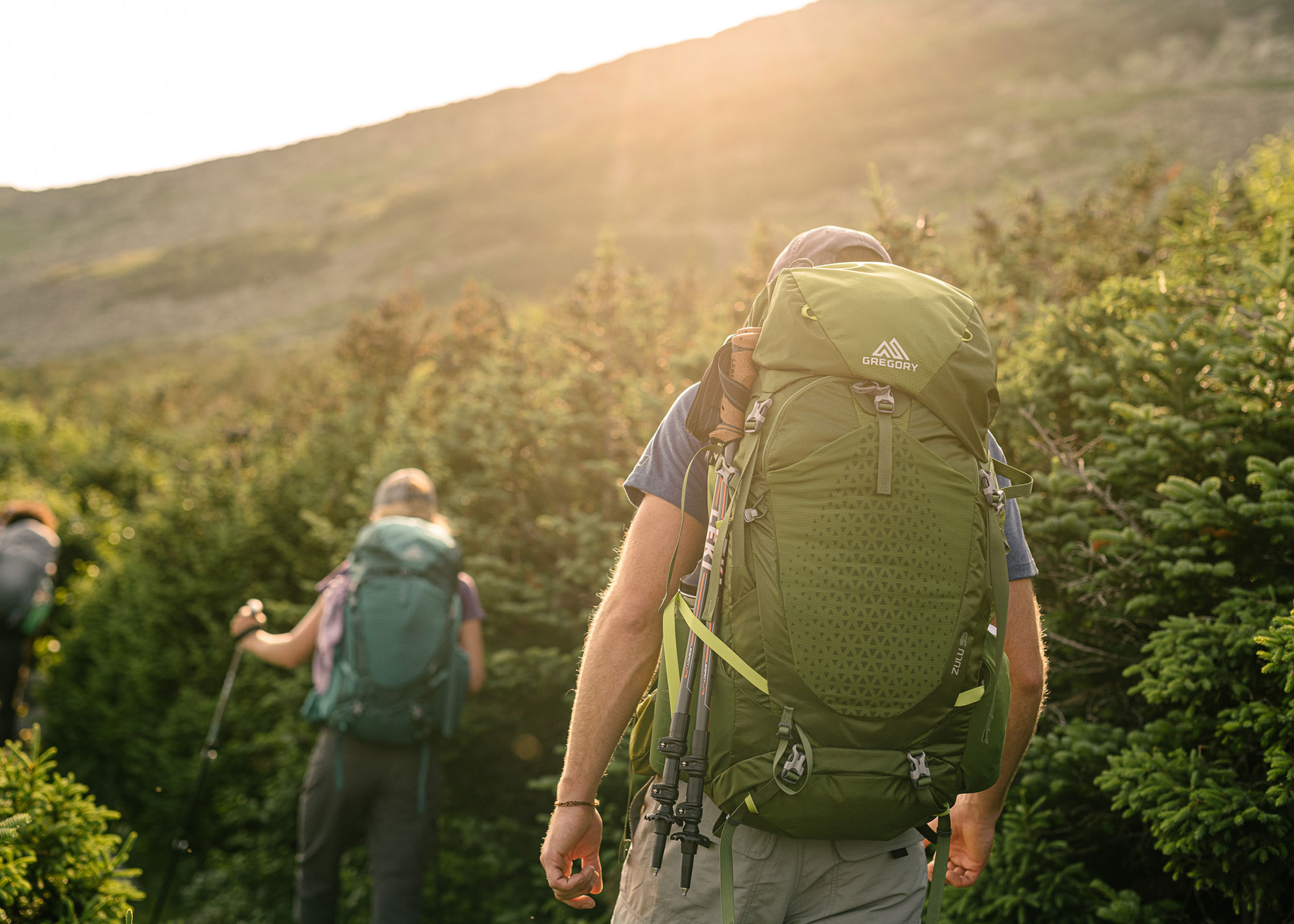
Backpacking Packs
As the name implies, these are your overnight bags, big enough for all the gear that comes with that. And just how many nights you’ll be out, as well as your creature comfort level, will determine exactly how large a pack you’ll need. Pay particular attention to how the pack fits your body as you will be carrying more weight, and for multiple days.
Keep mind that the volumes given and how they relate to the length of a trip are not law. While they are a pretty good guide for beginners, there are plenty of weekenders who like to carry extra food and gear like camp chairs, so a bigger pack might be nice. Simultaneously, thru-hikers on the Appalachian Trail, out for weeks at a time, often pack ultralight and get away with extremely small packs.
Weekend (1-3 nights, 36-55 liters)
These are slightly larger than daypacks, and likely have more compartments in them. This volume range is suitable for a few nights out, if you’re using lightweight modern gear. But be prepared: A lot of packing discipline and efficiency technique goes into fitting your gear into these smaller packs, so most beginners opt for slightly larger packs, even on weekends.
Multiday (3-5 nights, 56-80 liters)
These packs, the most popular backpacking packs, are slightly larger for longer trips, or those shorter trips where you may need to carry extra gear. They are well-suited to warm-weather trips lasting 3-plus days. This is the size/volume range that you typically see on long-distance hiking trails like the Appalachian Trail, the Long Trail, or the PCT. It will have more space for food and extra clothes.
Expedition (More than 5 nights, 70 liters and up)
These specialized packs are meant for long-duration journeys or trips to remote places where additional gear or equipment may be needed. This could be a 7 to 10 day trek out west, extended trips to climbing destinations, or travel in extreme weather regions like the mountains or winter backpacking. They might also be necessary for parents carrying extra gear on multiday family trips.

Hydration Packs & Waist Packs
Hydration packs offer a smaller, streamlined version of a daypack. They are useful for shorter hikes, and for outdoor fitness like running, cycling, or the slopes where you may want food and water beyond a granola bar. They are also a good starter pack for kids and are helpful for parents to encourage hydration on-the-go. If you need a little more space, most daypacks today are hydration compatible (see below).
Waist packs have become more technical over the years, which has increased their functionality and range of use. They come in a wide range from smaller pouches for your wallet, keys, and a few granola bars, to larger packs that hold water bottles and some gear. They’re suitable for short walks, or when you’re touring and want a little extra pocket space on-the-go. There are also lightweight versions that are popular with long-distance runners, they hold small water bottles and maybe a snack or two.
GO: Daypacks | Backpacking Packs | Waist Packs | Hydration Packs
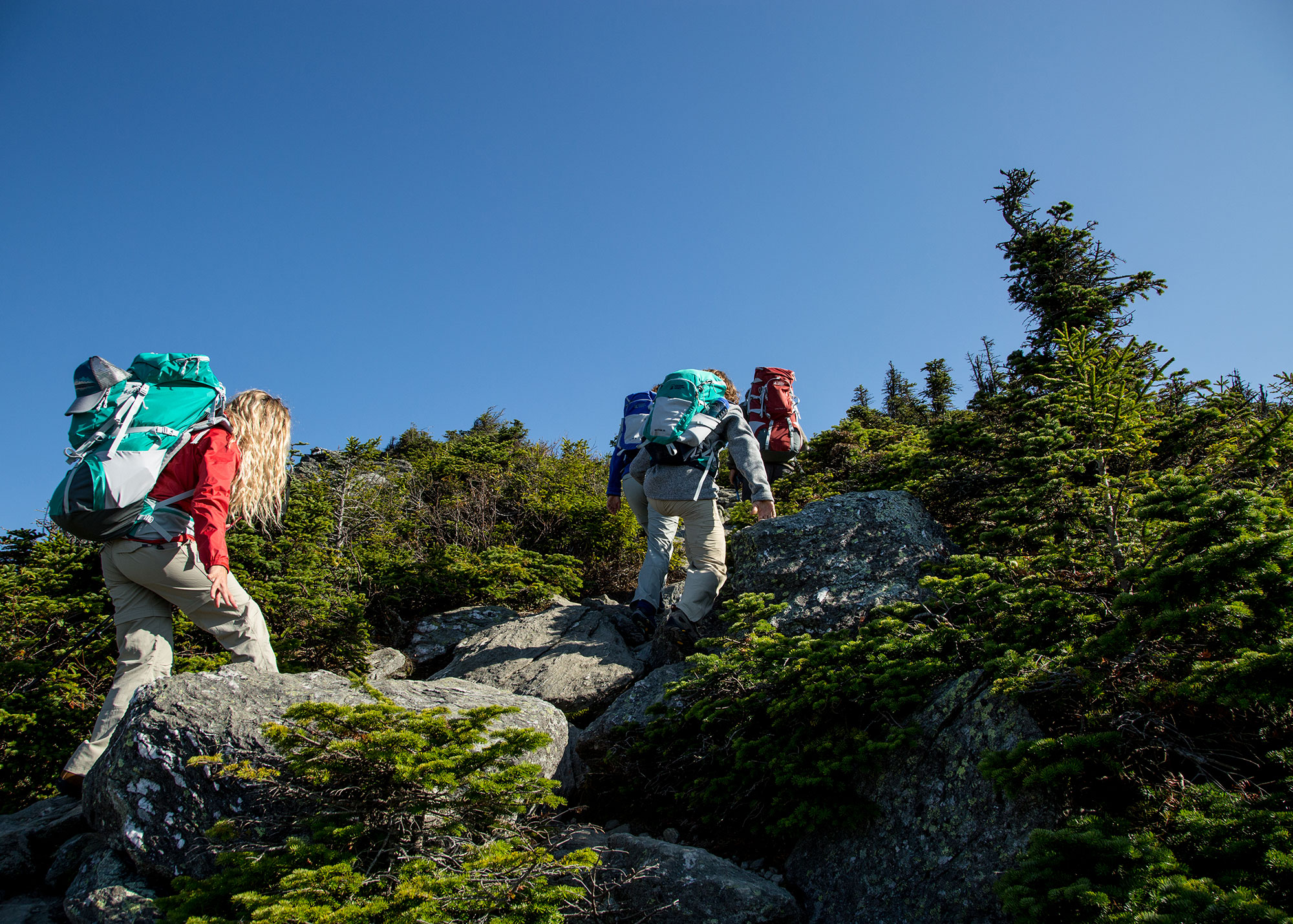
Backpack Structure
Packs are built and organizes in many different ways, many of which impact personal preferences, but others impact the carry-ability and usability of a pack for a specific activity.
Internal vs. External Frame
Almost all packs feature some kind of rigid frame through the back. These add stability, keep the load close to your back, and help transfer weight to your waist. In daypacks, this usually just comes from more rigid foam or fabric, but in larger backpacking packs, these are metal rods, typically set up in one of two ways:
External frames are composed of hollow aluminum pipes and are easily visible on the outside of the pack. The pack bag is then attached to this frame system, and the frame offers many attachment options for additional gear. Less common than they once were, these types are still available on the market.
Internal frame backpacks are far more common, today. They are composed of thin fiberglass or metal rods that are sewn into the pack itself and give the pack its structure while using minimal materials. They also tend to be more streamlined and keep the load toward the center of your back. Most internal-frame packs also allow you to adjust the torso length to fit your body.
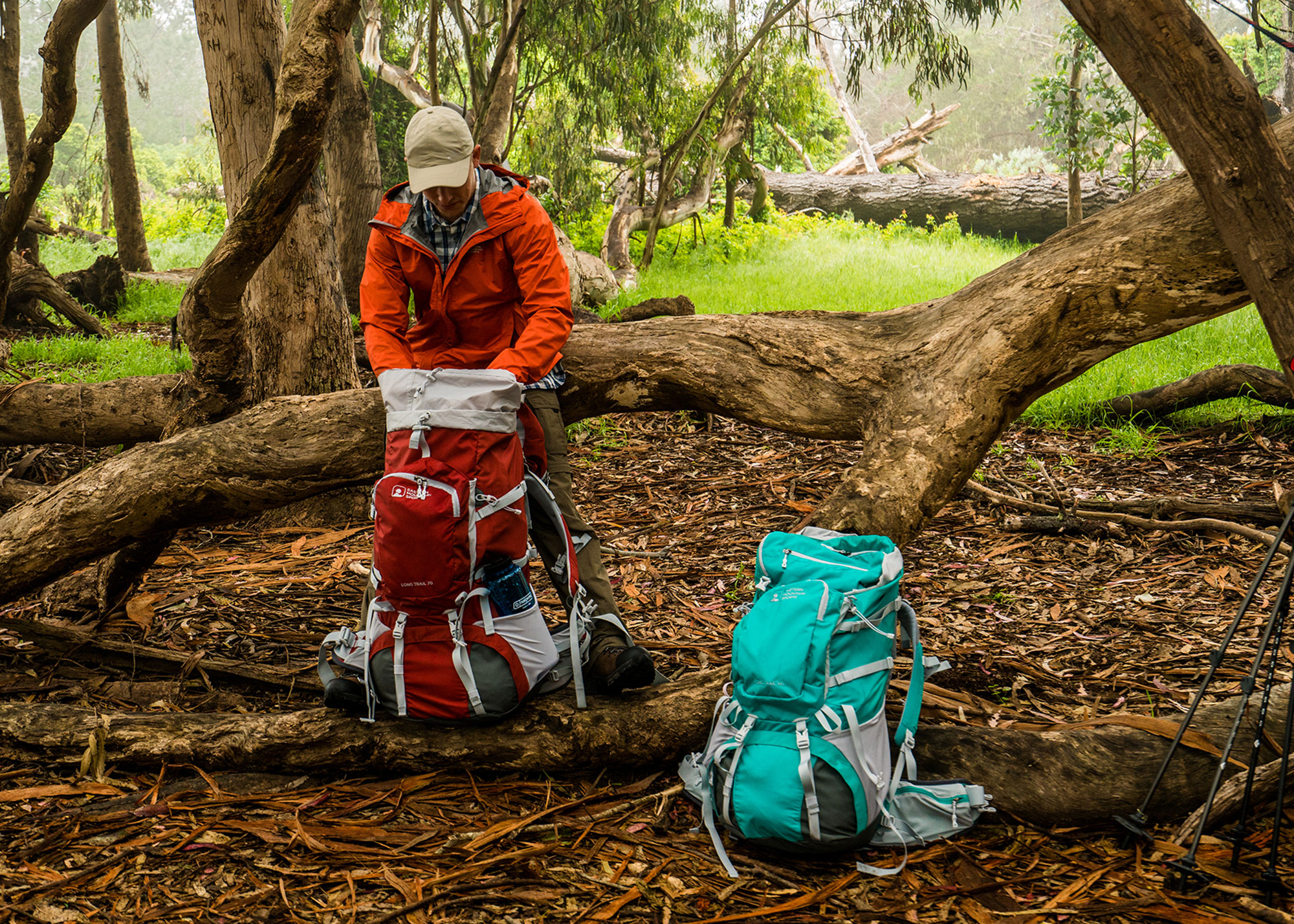
Top-loading vs. Panel Access
Most larger packs are top-loading, providing access to its main compartment through a cinched opening at the top of the pack. This makes it easy to load the pack efficiently and keep its contents stable. Packing these packs requires some thought to correctly position commonly-needed items toward the top so they are more easily accessible.
However, some designs (including most daypacks) offer you a panel access option, allowing you to reach into the main compartment without digging from the top and removing other items unnecessarily. This also allows you to organize your pack around each item’s weight and not just the frequency you may need to access it on the trail.
Many backpacking packs today feature aspects of both, primarily using a top-loading access point, but offering other zippers along the sides or back to make accessing deeper items on the fly easier.
Sleeping Bag Compartment
A sleeping bag compartment is one panel-access point on larger packs, specifically designed for sleeping bags. It is a separate area at the bottom of the pack just below and sometimes connected to, the main compartment. It is accessed from the outside so you can reach for the sleeping bag at the end of the day without having to remove everything else. Some packs have the option to remove an internal panel and make the sleeping bag area contiguous to the main compartment.
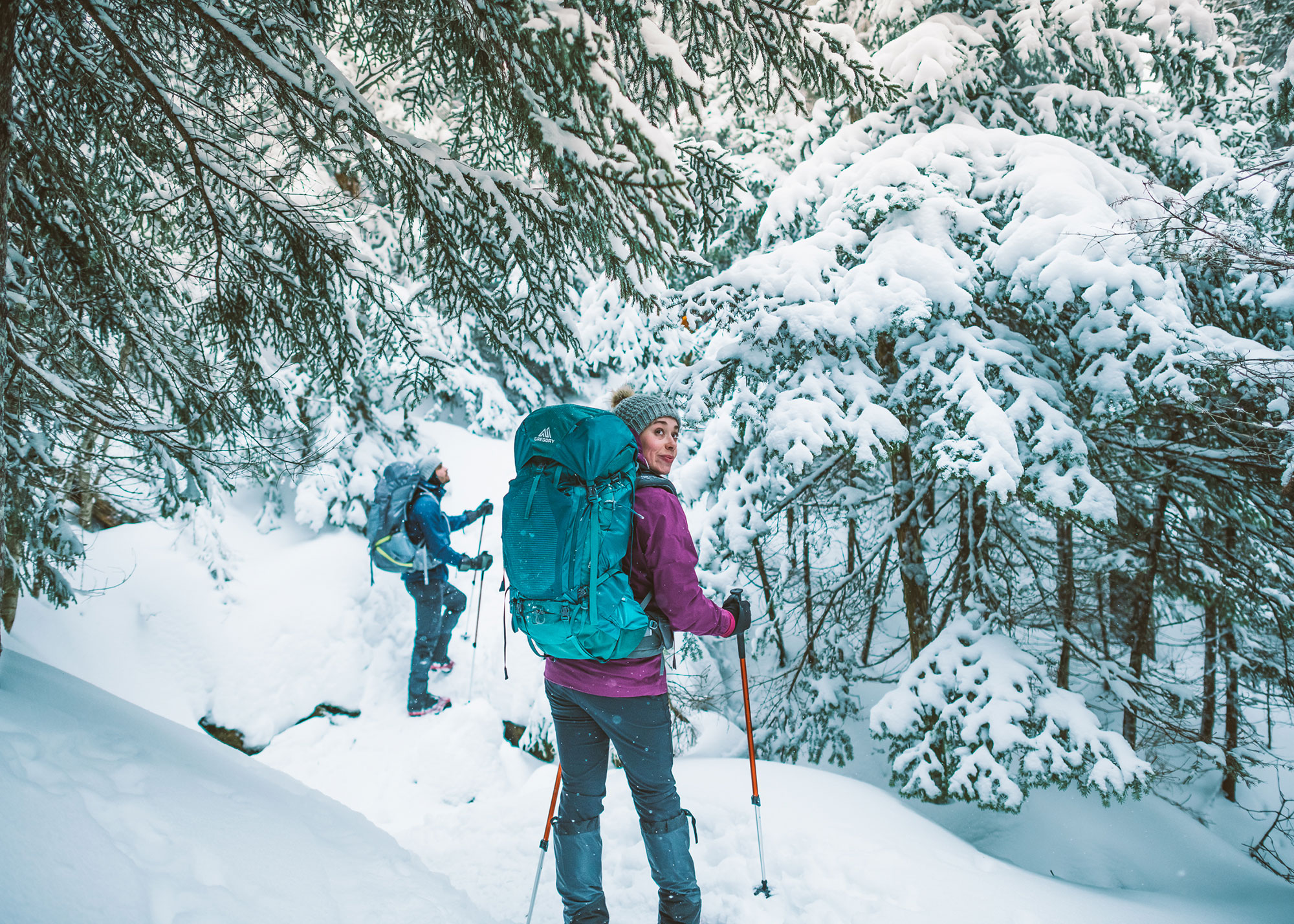
Load Support, Padding & Ventilation
A pack’s load-carrying system consists of two main supports: shoulder straps and the hip belt, both of which have varying types (and amounts) of padding. Packs are designed to direct the weight onto your skeletal frame at your hips, a natural point of support for the human body. Shoulder straps hold the pack upright and close to your body to direct the load directly down, rather than pulling you to the side or backwards. While shoulder straps should not carry the weight, they do have additional “load-lifter” straps to fine-tune the fit and pull it closer to your body.
Padding on the shoulder straps and hip belt is an important feature, and largely a matter of personal preference. Thicker padding can offer more comfort and a flexible fit to your unique body shape, while less padding can allow these points of contact to ventilate better. Some straps are even designed with holes in them to reduce sweat build-up. Always test your pack in the store and fully-weighted to see what feels right for you.
Ventilation is another important feature of your pack, as it can reduce the build-up of uncomfortable, and possibly unsafe perspiration on your body. Traditionally, the padded fabric of the pack lays directly against your back, like a typical school bookbag. You might not notice how much sweat builds-up until you take the pack off. These days, most hiking packs are designed with greater ventilation, potentially using air channels in the backpanel, an arch between the shoulders and hip to lift it off your back entirely, or breathable mesh in the backpanel.
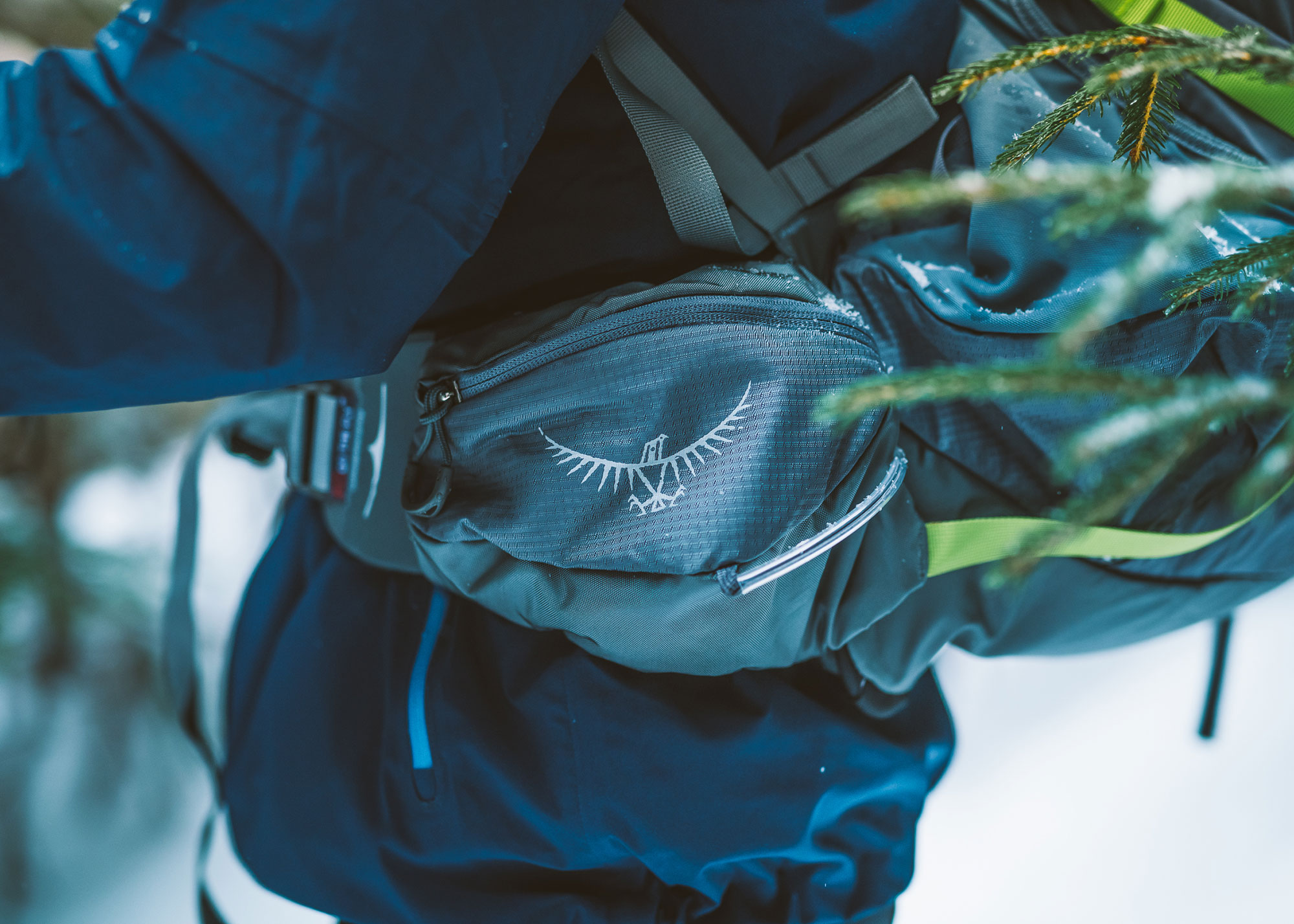
Pack Features & Accessories
Pockets
In addition to the main and sleeping bag compartments, a pack will have several other storage pockets. Starting at the top, the “brain” is the very top pouch that closes over the main compartment, acting as storage and weather closure. It is a great place for those items you may want to have on the go like lunch, gloves, hat, sunglasses, or a map. Some packs have a removable brain, allowing you to either leave it at home to reduce weight or use it to carry a few items on a short side trip from your camp, or into your tent at night.
Other pockets include water bottle pockets, which are located just behind your hips and are nice for carrying a water bottle, or other small items you may need to reach while walking. Exterior access pockets can also be found on the outer sides of the pack, and are nice for storing items you may want to reach for without digging into the main compartment. This might include rain gear, lunch, or a water filter.
Hip belt pockets are a great feature found on many packs today. These are small, zipper-closed pockets on each side of your hip belt and in easy reach while you’re hiking. These are a great place for a compass, GPS, or snacks.
Different packs have varying numbers of pockets and organizational abilities, mostly corresponding to preference—Some like the organization of multiple pockets, while others prefer the streamlined nature of keeping everything in the large main compartment.
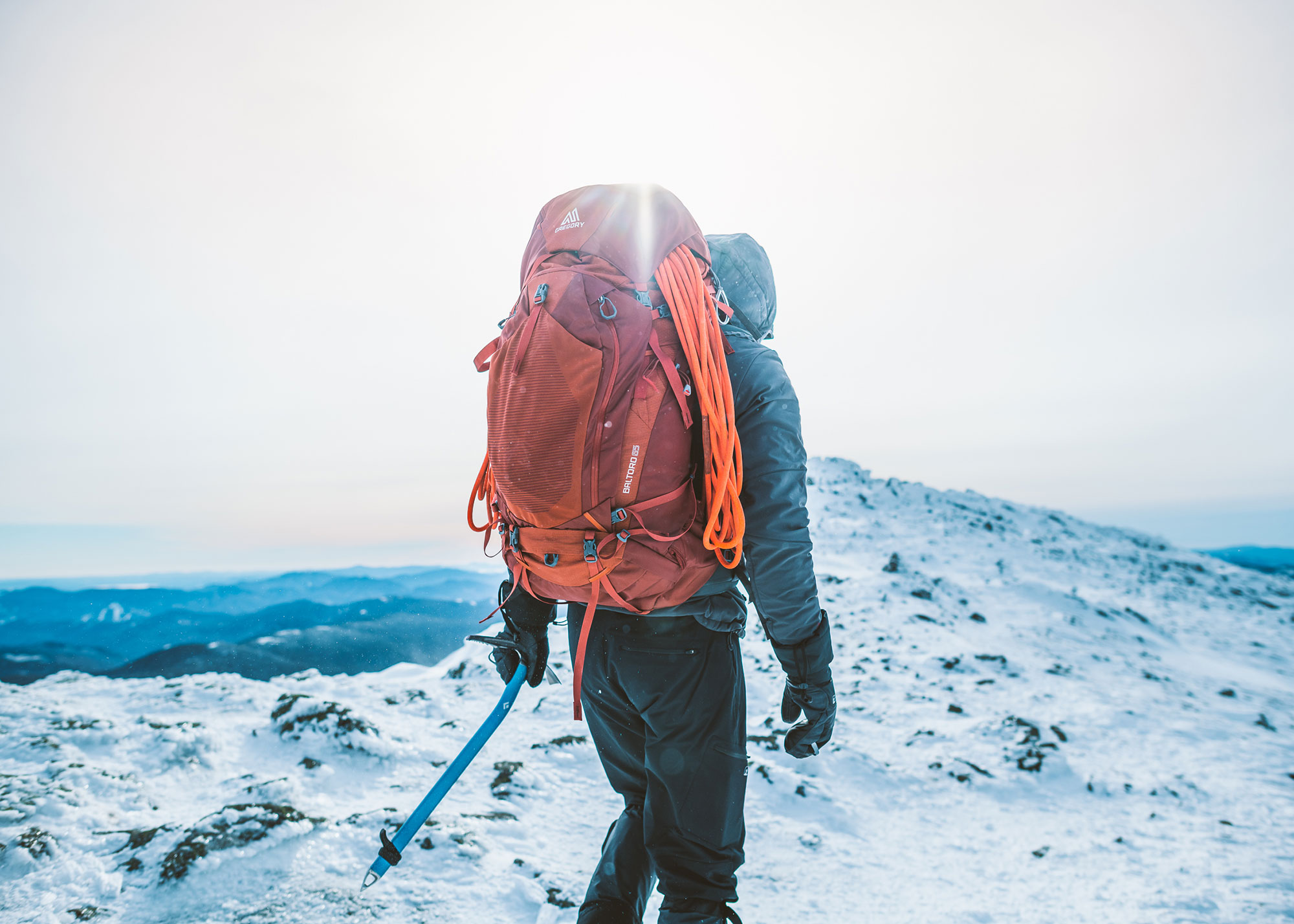
Attachment Points
You will notice most packs have a variety of small loops or straps sewn into them for attaching additional gear. These are helpful for attaching bulky, but lighter-weight, gear like trekking poles, a sleeping pad, an ice tool, spikes/crampons, snowshoes, or even skis. Consider your intended activities and see what attachment point(s) might be useful to you.
Rain Cover/Weather Resistance
Most hiking backpacks are made with water-resistant materials but are not actually waterproof. And when you are on the trail, you will definitely want the option to protect your clothing and gear from the elements. Rain covers are like a fitted, waterproof jacket that you stretch over the pack. Some packs come with a rain cover built-in, but if not, there are many options available and it’s a worthwhile investment. They come in a range of colors for degrees of visibility, and some include reflective graphics.
Hydration-Compatibility
Keeping hydrated is critical when you’re on the trail, and many hiking packs now have a specific sleeve/pouch inside the pack to hold a hydration reservoir. A reservoir is a plastic bladder with a drinking hose that stretches through a secure opening in the pack so you can hydrate on-the-go. It is a very nice feature, and many find it easier than reaching for that water bottle.
GO: Pack Rain Covers | Clips & Buckles | Straps & Gear Ties
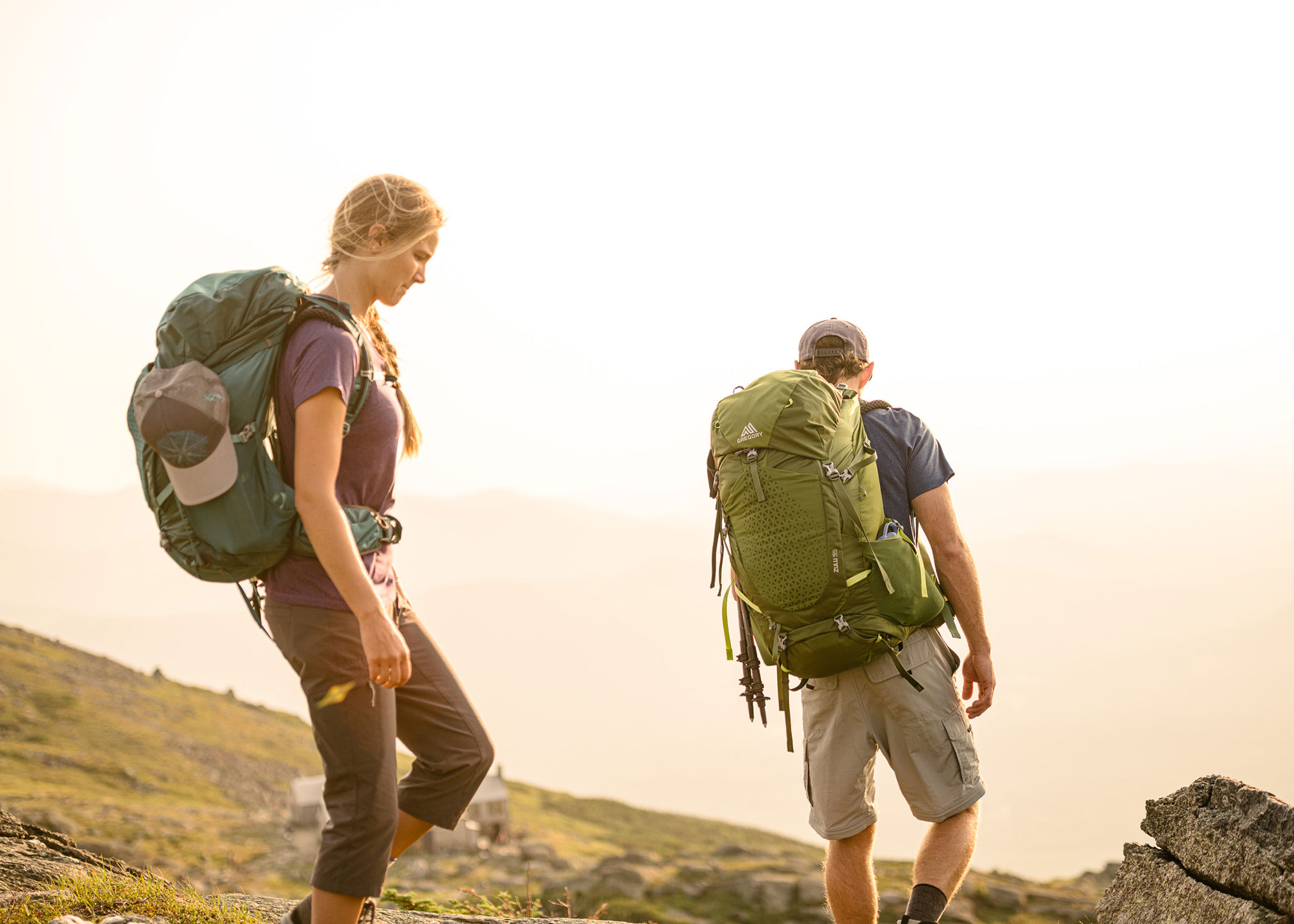
Where to begin?
Now that you have an idea of what to look for, where does one go to find the right pack? It is strongly recommended that you visit an EMS store to try the backpack on first-hand and receive advice from a store expert. Buying online might be convenient, but finding the right fit your body is critical and well worth spending the extra time to get it right.
When you visit a store and work with their staff, you should expect several things. First, you will get introduced to many different pack styles, designs, and manufacturers. Each has its own unique approach and one of them may suit your needs and preferences better than the others. Secondly, you will get the pack properly fitted to your body. This is imperative and it involves finding the correct torso length, then fine-tuning the fit. Third, in the store, you will be able to load the pack with test weights (usually sandbags) to simulate a fully-loaded pack. Then you can wear the pack around the store for a length of time to see how it really feels. It is always best to find out how it truly feels before you make the final selection.
Lastly, you can expect good, relevant advice. Store staff will take the time to work with you and give you invaluable advice on how the packs work, how they are constructed, and how each might work for you and your intended activity. You can often find a staff member who has specific experience related to your chosen activity, so the guidance you receive will be timely and on-point.
Bryce Waldrop
Bryce is a freelance writer and preservation consultant who lives in Southern Maine with his wife and their two awesome kids. Previously from Upstate NY, he climbed the 46 High Peaks in the Adirondacks before discovering the mountains of New England. When he’s not exploring the outdoors, Bryce can be found writing, teaching, photographing old buildings, or getting crushed by his daughters in Monopoly.




